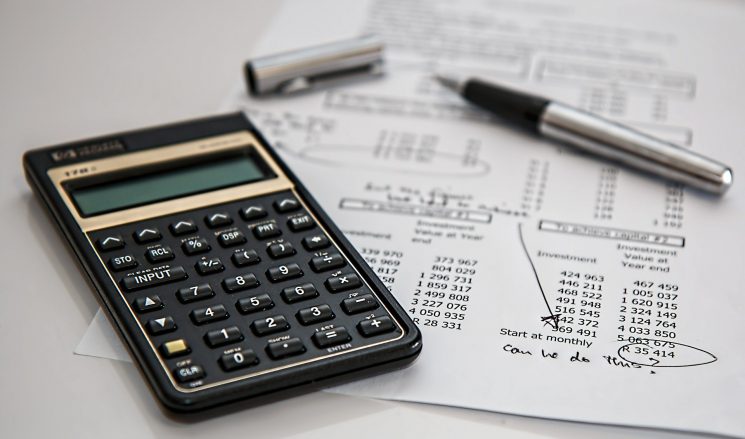A value added tax is a type of tax which is applied on products or services that can be assessed on products during the production at each stage from labour, raw material till the final stage of the product. It is applied to all the production and distribution levels of the product. We can say that it is an indirect tax on the value in which the amount of product has been increased on each production and distribution level.
However, over 160 countries use this value-added tax (VAT) and is most commonly used by the “European Union. With the terms of VAT, TVA, IVA, moms, MwST, and in a few other terms it can be labeled, which depends on each country. Read on to know how to calculate the VAT (value-added tax) on a product. You can also try a UK vat calculator that considers the standard UK VAT rates to perform the vat inclusive and exclusive calculations.
How to calculate VAT (value-added tax)?
To calculate the value added tax, multiply the VAT rate by the total cost of pre-tax, then add the cost of VAT to the purchase. It also prevents the charging of double taxation and ensures that the purchaser on each stage is paying the VAT (value-added tax) that they have previously paid. You can calculate the VAT without doing the manual calculation by using an online VAT calculator that helps to calculate the amount of VAT that you need to pay and the gross price of a product, which is based on its net value.
Example of calculating VAT:
Calculate the value-added tax of any transaction can be challenging and confusing at different times, but following these simple steps helps you to calculate VAT:
- Take the gross amount of sum, which is the total amount including the VAT rate. Divide the gross price by 117.5, if the current VAT rate is 17.5%. (If the vat is different based on your country rules, then add 100 to the percentage of the vat and divide it by that number). Remember that the vat rate of the UK has changed from 17.5% to 20%.
- Multiple the results that you get after the division process from the step 1 by 100 to get the pre vat total.
- Multiply the generated result from the 1 by vat rate of 17.5 to get the value-added tax of the bill.
The current value-added tax rate in the UK is 20%. So, to calculate VAT according to the vat rate of the UK, you can use an online UK vat calculator that helps you to add the vat rate to calculate the gross amount.
Calculating VAT returns might seem easy for businesses but can become challenging for some VAT registered businesses. Wrong calculations can result in unpaid VAT errors leading to an assessment resulting in liabilities to pay VAT for the last four years or more with interest and further penalties. Therefore, it is advisable to locate a VAT services provider in the UK to help you stay compliant while avoiding penalties.
How a Value-Added Tax (VAT) Works:
A value-added tax is applied on the gross margin at each point from production to distribution process of an item. The VAT tax is applied and collected as well at each stage of the product manufacturing and the sales tax is that, which is applied and paid by the consumer at the supply chain. So, you can use a vat online calculator that allows you to calculate value-added tax, which is charged on a net amount or the vat that is included with-in the total amount.
For Example: Dulce is an expensive candy which is manufactured and sold in the country named “Alexia”. The value added tax rate in country Alexia is 10%.
- The manufacturer of the Dulce’s buys the raw material at the price of $2.00 with 20-cent vat, which is payable to the government of Alexia.
- The manufacturer of the candy sells Dulce after its manufacturing for $5.00 with a vat rate of 50-cents for a total of $5.50. However, the manufacturer Dulce paid only 30-cents to the government, which is the total vat at that stage, and then subtracts the very first vat rate that you get by the supplier of the raw material. Remember that the vat rate 30cents is equal to 10% of the manufacturer’s gross margin of $3.00.
- After that the retailer is able to sell Dulce to the consumers for $10 with the vat rate of $1for the total of $11. The retailer pays the 50 cents to the government of Alexia that is the total of vat at this point and minus the prior vat rate, which is 50 cents that is charged by the manufacturer. Here, these 50 cents represents 10% vat rate of the retailer’s gross margin.
If you want to know how much is vat during the manufacturing of a product, you can use the vat formula or you can try an online UK vat calculator that allows you to determine the vat on invoices or receipts.
Important key-points:
- Each payment is made to the previous buyer for the compensation in the chain. So, we can say that the tax is paid by the consumers.
- The value added tax is paid by the consumer at every stage of the product production from the selling of raw material to its final stage of purchasing. You can also try a UK vat calculator online that allows you to remove VAT from the gross amount to calculate the net amount.
Conclusion:
If the vat rate replaced the income tax, then consumers can get benefits in a better way. VAT is not a burden for the wealthy people like other taxes but it is a burden for those who spend a large amount of their salaries to fulfill their home necessities. In other words, a consumer with a lower income would spend a large amount of money to pay the tax.





